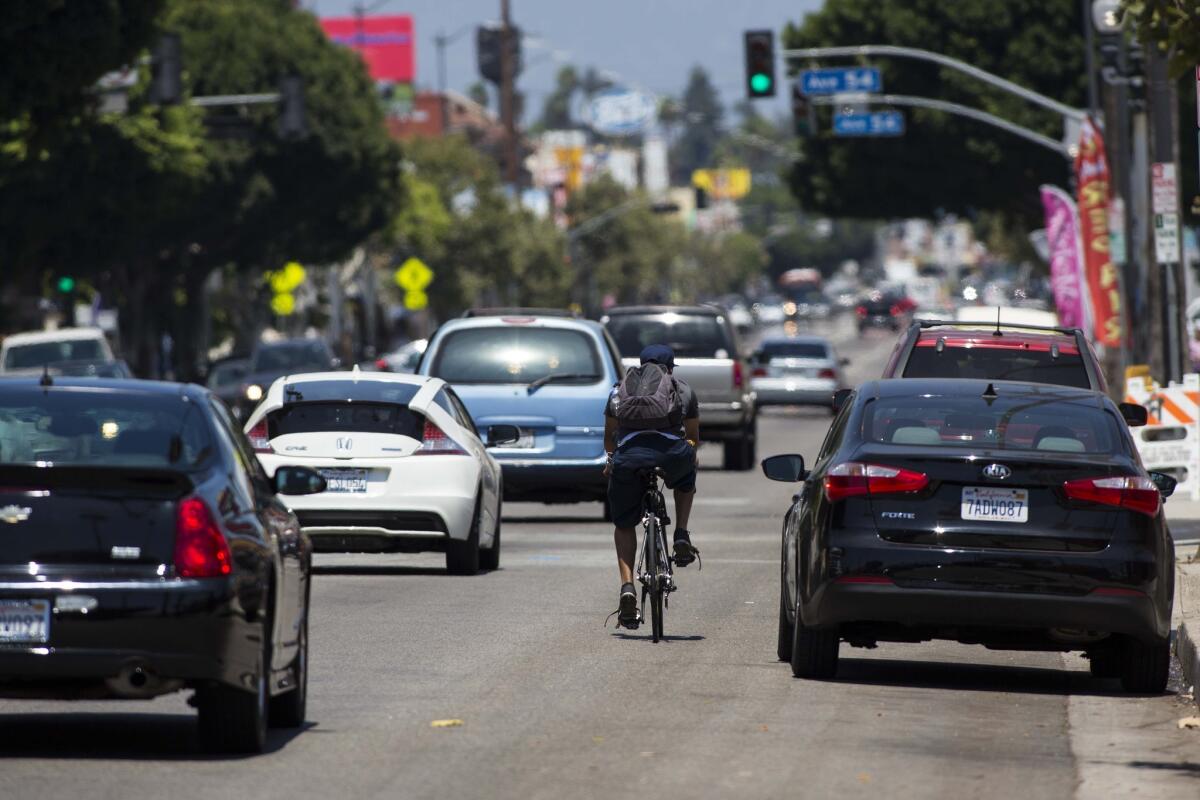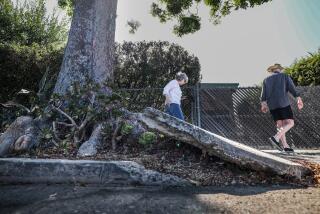Editorial: Some bumps in the road on the way to a bike-friendly L.A.

- Share via
As the city of Los Angeles continues its ambitious 35-year project to build out 1,684 miles of bikeways, it is running into resistance in some neighborhoods from politicians, merchants and residents. Plans to paint bike lanes on a three-mile stretch of North Figueroa from York Boulevard to Avenue 26, for example, have been stopped altogether by City Councilman Gil Cedillo, whose district includes that area. Cedillo says he heard strong opposition to the plan at community meetings and that some local fire and police officials told him it could pose a safety problem for emergency response vehicles.
City traffic engineers, meanwhile, say the fire and police officials they spoke to did not have problems with this particular route for emergency vehicles. And as for congestion worries, they’re probably overblown. In fact, no traffic lanes would be removed on the northbound side of Figueroa in that stretch; they would just be narrowed to allow for the addition of a bike lane. On the southbound side, two vehicle lanes would be reduced to one. But Department of Transportation traffic engineers who studied the route estimate that southbound drivers would spend only an extra 41 to 46 seconds in traffic.
This battle is familiar. Building a bike-friendly city, a goal the City Council adopted when it passed its official city bicycle plan in 2011, requires clear, measurable trade-offs. Adding bike lanes reduces space for cars and irritates drivers; that’s undeniable. But making the city safe and hospitable for cyclists can also reduce carbon emissions and overall congestion by luring Angelenos out of their cars. That’s a worthwhile objective.
Unless some demonstrable miscalculation was made in the bike plan, or unless there’s a real safety issue, individual City Council members should not be tinkering with the plan, which was designed carefully with the whole city in mind. Currently, Los Angeles has 337.62 miles of dedicated bike lanes. Cedillo is looking at alternatives to the Figueroa corridor, but the city planners chose these designated routes for specific reasons; nearby streets, they say, won’t work. The idea is to create a seamless network of bike lanes that allow cyclists to travel continuously from one point to another.
No one said it would be easy to make legions of drivers in car-obsessed Los Angeles relinquish a fraction of their lanes to bicycles. No driver wants to be slowed down by even 47 seconds. And it’s understandable that drivers are frustrated when they see congested roads and empty bike lanes.
But the more the city continues to implement its bike plan, the more extensive the network of bike lanes becomes. The hope is that over time, those lanes will begin to fill up — and maybe some drivers will get out of their cars and onto bikes.
Follow the Opinion section on Twitter @latimesopinion
More to Read
Sign up for Essential California
The most important California stories and recommendations in your inbox every morning.
You may occasionally receive promotional content from the Los Angeles Times.










